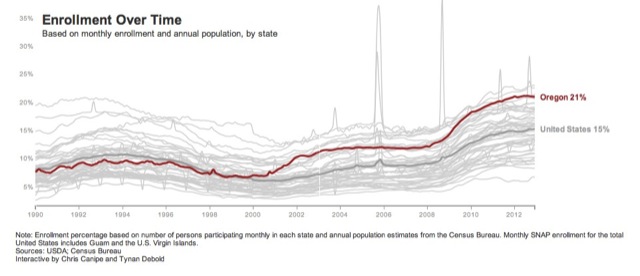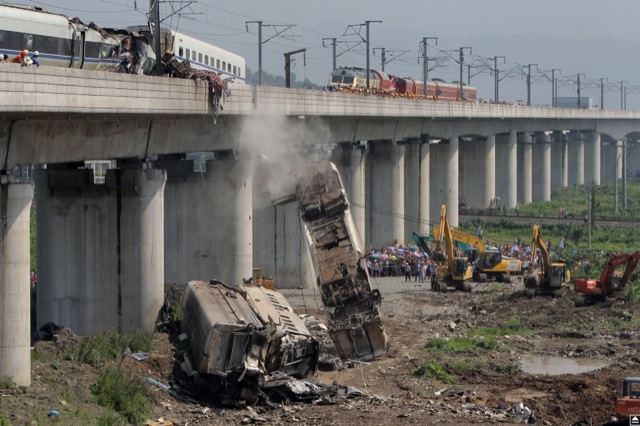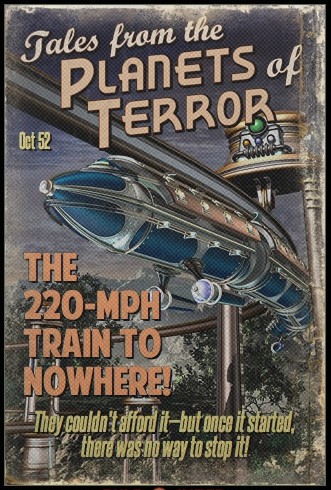Thanks to the industriousness of Portland’s creative class of young, well-educated people, Oregon now has the third-highest food stamp rate of any state in the country. As shown in the chart below, Oregon was disgustingly below average in the 1990s, but shot up in 2001, the year the Portland streetcar opened, and has been in the top three since about 2009. Today, it is behind only Louisiana and Mississippi (and, it might be noted, DC), states well known for their hard work and creativity.
It wasn’t easy for Oregon to achieve the status of being number three. Back in the 1990s, most Oregonians on food stamps were rural residents put out of work by the decline in federal land timber sales. But that can only go so far, as there aren’t that many sawmills left that remain to be put out of business. So the creative class got to work, making Oregon one of the first states to distribute food stamps in the form of an debit card so there would be no stigma put on those using it. In fact, the card is called the “Oregon Trail” card, thus identifying food-stamp recipients with the brave pioneers who first settled Oregon 170 years ago.











